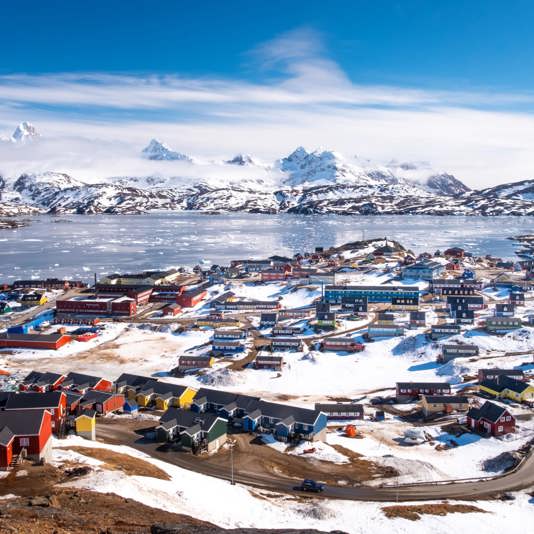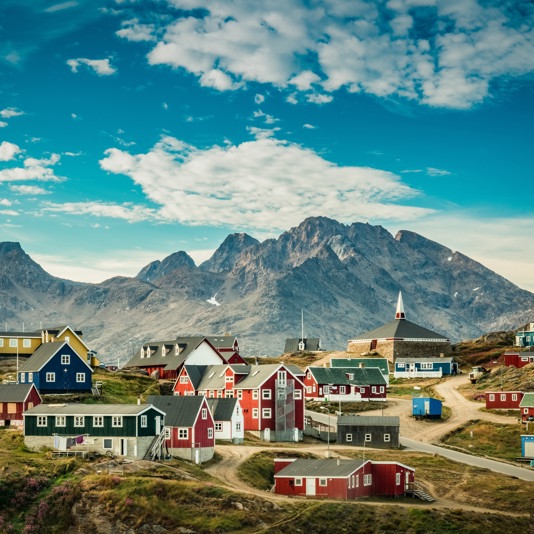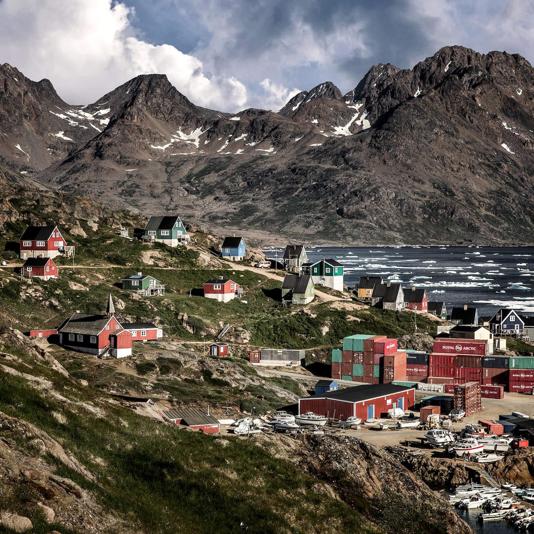Welcome to the beautiful and remote port of Angmagssalik, also known as Tasiilaq, located in eastern Greenland. This port is known for its stunning natural beauty, with majestic icebergs and rugged mountain peaks framing the picturesque town.
The largest settlement in East Greenland is Angmagssalik, also called Tasiilaq. The town is situated in a picturesque fjord surrounded by high mountains with snowy peaks. There is a chance to see beautiful icebergs, and whales on the way to the settlement.
The houses are usually colourful in all the villages in Greenland. It used to be that the colour of the house indicated the occupation of the person living there. When you entered the port, you could immediately see, where a doctor, a postman or a carpenter lived. Today all the houses are simply painted in the colours chosen by the inhabitants themselves.
The town has a population of 2,000 people. Most of the inhabitants are the Inuit. The traditional occupation for the Inuit is hunting and fishing.
Tasiilaq has a history museum, where you can learn about Inuit life, practise balancing on a kayak and see how life is organised in an Inuit home.
For those seeking a more adrenaline-filled adventure, try your hand at kayaking or take a helicopter ride over the stunning landscape.
In the small Inuit village of Angmagssalik (Tasiilaq), located in the southeastern part of Greenland, there is a tale passed down from generation to generation about a giantess who once roamed the land.
According to legend, the giantess was feared by all who lived in the village. Her immense size and strength made her nearly unstoppable, and she had a terrible temper that could flare up at any moment. Many hunters had lost their lives trying to take down the giantess, but none had succeeded.
One day, a group of hunters decided to set out to try their luck against the giantess. They were determined to bring her down and rid their village of her terror once and for all. They packed their supplies and set out, following the tracks of the giantess through the snowy wilderness.
Days turned into weeks, and the hunters searched tirelessly for any sign of the giantess. They traveled through deep valleys, over treacherous mountains, and across frozen rivers, but their search was in vain.
One night, as the hunters were camped out on the shores of the Angmagssalik Fjord, they heard a sound that made their blood run cold. It was the sound of the giantess's footsteps, getting closer and closer.
In a panic, the hunters tried to flee, but they were too slow. The giantess caught up to them and unleashed her fury, taking down several hunters with a single blow. The rest scattered, fleeing for their lives.
As they ran, the hunters stumbled across a small port in the fjord, surrounded by steep cliffs. It was a place they had never seen before, but it seemed like their only chance for survival. They hurried to the port and climbed aboard the waiting boat.
As the boat pulled away from the port, the hunters looked back to see the giantess standing on the shore, her rage now turning to confusion. She had never seen a boat like this before, and she watched as it disappeared into the fog.
The hunters returned to their village, shaken but grateful to be alive. They told the tale of their encounter with the giantess and the port they had found, which they named Kulusuk, after the boat that had saved their lives.
And so, to this day, the people of Angmagssalik (Tasiilaq) honor the memory of the lost hunters and the legend of the giantess. The port of Kulusuk serves as a reminder of the bravery and determination of those who faced the giantess and lived to tell the tale.


